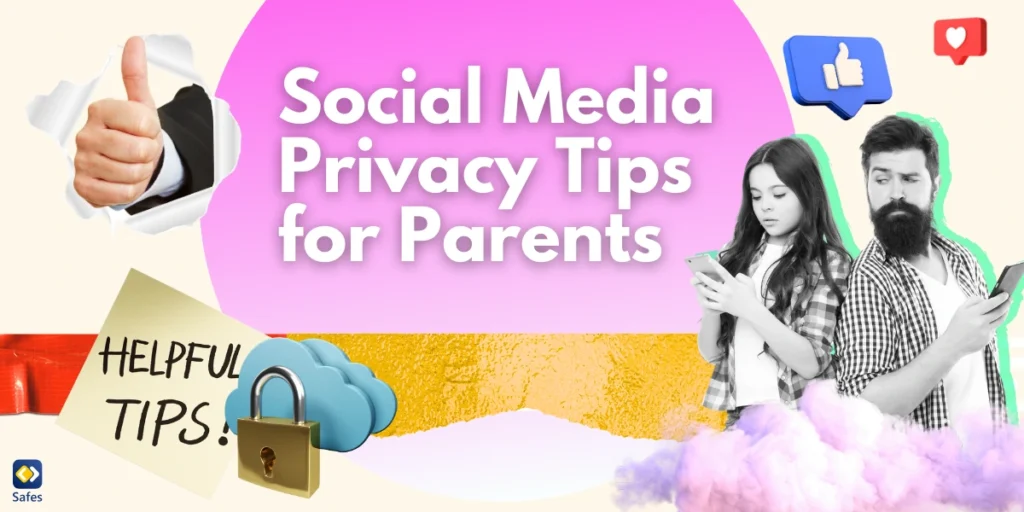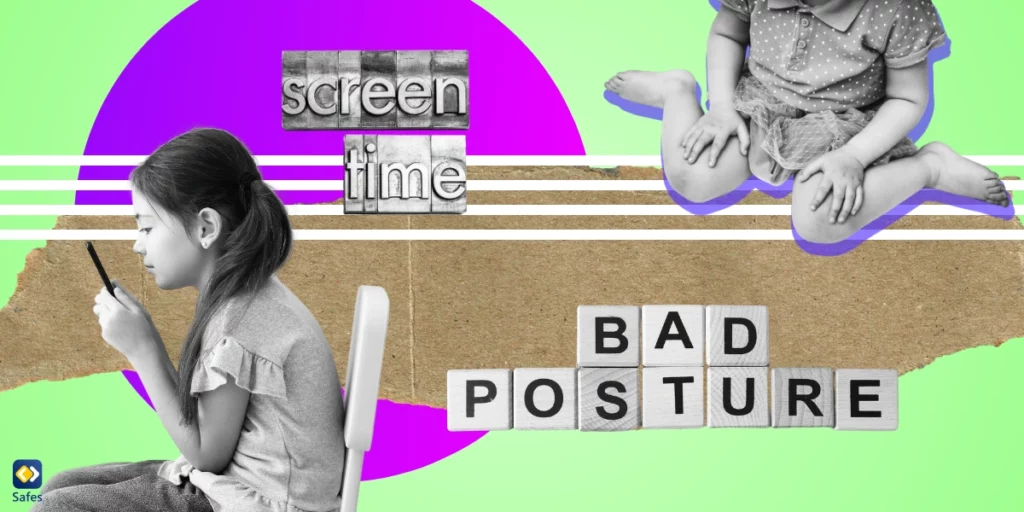In today’s digital age, children are spending more time than ever on social media. While platforms like Instagram, TikTok, and Snapchat offer opportunities for creativity and connection, they also come with significant privacy risks. Many parents worry about how to keep their children safe from cyberbullying, online predators, data breaches, and inappropriate content. Teaching kids about online privacy is critical to ensuring a safer digital experience. This blog provides practical and actionable social media privacy tips for parents. From adjusting privacy settings to using parental control apps, these tips will help you protect your child’s personal information and create a healthier relationship with social media.
Download and Start Your Free Trial of the Safes Parental Control App
The Dangers of Social Media for Kids
Social media can be a dangerous place for kids for reasons such as:
1. Exposure to Cyberbullying
Social media has become a breeding ground for cyberbullying, where kids can face hurtful comments, rumors, or even threats. Unlike traditional bullying, cyberbullying follows children home and can happen 24/7. The psychological effects, including anxiety, depression, and low self-esteem, can be severe and long-lasting. Parents often find it challenging to recognize the signs, as kids may hide their experiences out of fear or embarrassment.
2. Risks of Online Predators
Children’s lack of understanding about online boundaries can make them vulnerable to online predators. Predators often use fake profiles to befriend kids, gain their trust, and manipulate them into sharing sensitive information or meeting in person. This threat becomes more dangerous when kids overshare personal details, such as their location, school, or daily routines, on public profiles.
3. Privacy Breaches and Data Exploitation
Most social media platforms collect user data, and kids are no exception. They may unknowingly share personal information that can be used for identity theft, targeted advertising, or even sold to third parties. Additionally, children may not understand how to use privacy settings, leaving their profiles exposed to strangers. Once shared online, data is challenging to remove completely, creating lasting risks.
4. Negative Mental Health Impacts
Social media can affect and distort a child’s perception of reality through unrealistic portrayals of lifestyles, beauty, and success. Constant comparisons can lead to feelings of inadequacy, low self-worth, and even body image issues. Furthermore, excessive social media use can disrupt sleep patterns, interfere with academic performance, and reduce time spent on offline activities like exercise and socializing in person.
The Importance of Social Media Privacy for Kids
Children and teenagers often underestimate the risks of oversharing online. Posting personal details such as their location, school, and photos can expose them to various threats. Social media platforms, while entertaining, are designed to gather and share user data. This makes kids an easy target for identity theft, targeted ads, and online predators.
Furthermore, once something is shared online, it becomes challenging to remove it completely. Children may not realize that inappropriate photos, comments, or posts can have long-term consequences, such as impacting college admissions or job prospects. As a parent, understanding these risks is the first step in teaching your child to navigate social media safely.

7 Privacy Tips for Social Media
Here are seven privacy tips that can help parents teach kids how to protect privacy on social media.
1. Adjust Privacy Settings on Social Media Accounts
The first and most critical step while learning how to protect your information when using social media is adjusting one’s social media privacy settings. Most platforms allow users to control who sees their posts, who can send them messages, and what information is publicly visible.
- Set Accounts to Private: Ensure your child’s accounts are set to private so only approved followers can see their posts. This reduces the chances of strangers accessing their content.
- Limit Profile Information: Encourage kids to avoid sharing personal details like phone numbers, addresses, or school names in their profiles.
- Turn Off Location Sharing: Many apps tag photos or posts with location data by default. Turn off location services to prevent strangers from knowing your child’s whereabouts.
- Disable Search Engine Indexing: Some platforms allow profiles to appear in search engine results. Opt-out of this feature to keep your child’s account more secure.
Review privacy settings regularly, as social media platforms often update their policies and default settings.
2. Teach Your Child to Be Selective with Friend Requests
Kids often accept friend requests or follow requests from people they don’t know, believing it will make them more popular. However, this behavior opens the door to strangers, spammers, or even predators gaining access to their profiles.
- Explain the Risks: Talk to your child about why it’s unsafe to connect with strangers online. Explain how predators or scammers can disguise themselves as friendly individuals.
- Encourage Connections with Trusted People: Teach your kids to only accept requests from friends, family, or people they know personally.
- Monitor Friend Lists: Periodically review your child’s friend or follower list and remove unfamiliar contacts.
By fostering an understanding of online boundaries, you help your child develop safer social media habits.
3. Educate Kids on the Risks of Oversharing
Oversharing personal information is one of the biggest risks on social media. Children may post photos, videos, or updates without considering the potential consequences.
- Avoid Posting Sensitive Information: Teach kids never to post their phone numbers, addresses, vacation plans, or financial details. Even seemingly innocent posts can provide clues to their routines.
- Think Before You Post: Encourage children to ask themselves, “Would I be okay with my parents, teachers, or strangers seeing this post?” This helps them think twice before sharing.
- Be Wary of Photos and Videos: Remind kids that photos and videos can reveal more than intended, such as locations, personal items, or school names.
Helping your child adopt a “less is more” mindset when sharing online can significantly reduce privacy risks.
4. Monitor Social Media Usage with Parental Control Apps
Parental control apps are valuable tools for monitoring and managing your child’s social media activity. They provide insights into what your child is doing online and help you address privacy concerns proactively.
A leading parental control app, Safes Family allows parents to monitor social media usage, set screen time limits, and track locations. It works seamlessly across iOS and Android devices, helping parents create a safer online environment for their kids. Try the Safes Family free trial to experience its comprehensive features.
5. Discuss Cyberbullying and Online Interactions
Cyberbullying is a significant concern for parents when it comes to social media. Teach your children to recognize and respond to inappropriate or harmful interactions.
- Encourage Open Communication: Let your kids know they can talk to you about anything troubling them online without fear of punishment.
- Recognize Cyberbullying Signs: Be on the lookout for behavioral changes like anxiety, withdrawal, or reluctance to use social media.
- Block and Report Bullies: Teach kids to block users who harass them and report such behavior to the platform’s moderators.
Ensuring your child feels supported will empower them to handle online conflicts responsibly.
6. Encourage Responsible Social Media Usage
Balancing safe social media use with other activities is essential for maintaining a healthy lifestyle. Excessive screen time can affect children’s mental health, sleep, and overall development.
- Set Screen Time Limits: Use built-in tools like Apple Screen Time or Google Family Link to manage daily social media usage.
- Promote Offline Activities: Encourage hobbies like sports, reading, and outdoor play to reduce dependency on social media.
- Lead by Example: Model responsible digital habits by limiting your own screen time and demonstrating healthy social media use.
Responsible usage habits will help your child maintain a balanced and safer relationship with technology.
7. Stay Involved and Up-to-Date
Social media trends and platforms evolve quickly. Staying involved in your child’s digital life and keeping yourself informed will help you address new challenges effectively.
- Know the Platforms: Familiarize yourself with the apps your child uses. Understand their privacy policies and risks.
- Follow Your Child’s Accounts: Be transparent about why you’re following them—not to spy, but to ensure their safety.
- Have Regular Conversations: Talk to your child about their experiences, concerns, and challenges on social media.
Active involvement ensures you’re equipped to guide your child through the ever-changing digital landscape.
Conclusion
In today’s digital world, social media is an integral part of many children’s lives, but it also comes with significant risks that require proactive management. Parents play a crucial role in ensuring their kids are safe, informed, and responsible while navigating these platforms. Parents can teach children how can you protect your information when using social media. By understanding the dangers, setting boundaries, and actively discussing online behavior, parents can help their children enjoy the benefits of social media without compromising their safety or privacy. Tools like privacy settings and parental control apps are invaluable for providing the necessary safeguards, giving parents peace of mind as their children engage online.
Ultimately, fostering a healthy relationship with social media starts with education and open communication. By using parental control apps like Safes Family, parents can monitor their child’s social media presence, enforce time limits, and ensure privacy settings are appropriately configured. Safes Family provides an effective and user-friendly solution for parents who want to strike the perfect balance between granting freedom and ensuring protection. Start your free trial of Safes Family today on iOS or Android to give your child a safer online experience.
Your Child’s Online Safety Starts Here
Every parent today needs a solution to manage screen time and keep their child safe online.
Without the right tools, digital risks and excessive screen time can impact children's well-being. Safes helps parents set healthy boundaries, monitor activity, and protect kids from online dangers—all with an easy-to-use app.
Take control of your child’s digital world. Learn more about Safes or download the app to start your free trial today!




